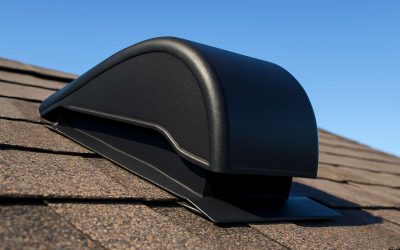
The roof vent is one of the most important features of any home’s attic. It is a key component of a well ventilated attic and helps reduce the burden on your air conditioning system, making it work less hard to cool the house. The purpose of a roof vent is to allow hot air to escape the attic, keeping it from building up inside your living spaces and increasing the temperature in your home.
There are several types of roof vents that you can choose from for your home, and you should consult with an expert to determine the best type for your situation. The most common is the natural roof vent, which relies on the stack effect and wind effect to move air through your attic. This type of roof vent also needs to be protected from debris such as leaves and sticks that could clog the opening, so it is essential to maintain this kind of vent by cleaning the protective cover once a year.
Another popular type of roof vent is the turbine vent, which utilizes wind to move air through the attic and out of your home. This kind of roof vent can be effective, but it requires a strong wind to activate the aluminum blades in the cowl. This means that it is not as effective on days with a light breeze or no wind at all, and you may want to consider other options for your roof vent if this is the only type of vent you use.
A ridge vent is a metal or plastic product that has a flange to allow for a secure fit over the attic shingle line. After the ridge cap is cut and placed, it is secured with galvanized nails that are covered with roofing cement. This style of vent is especially useful in snowy climates because it can protect against ice dams, which develop when warm attic air melts snow and refreezes over the shingles.
Powered exhaust vents can also help to keep your attic ventilated. These vents have a fan that can be activated by a thermostat or moisture monitor. The fan will run until the desired temperature or humidity is reached, allowing you to save energy while still maintaining the correct attic ventilation.
Other pipes you might see on your roof include the plumbing vent, which helps regulate the pressure of your drainpipes and prevents methane gas from backflowing into the house. This vent should be kept clear of leaves, debris and animals to prevent clogs, which can lead to backup in your plumbing and a bad smell in the home.
There are also a variety of bathroom and kitchen exhaust vents, which need to be properly maintained and sealed to avoid leaks. You should make sure to clean the vent ducts in these areas regularly and seal any open joints with caulking, and check with an expert to make sure that they are working as intended.



0 Comments